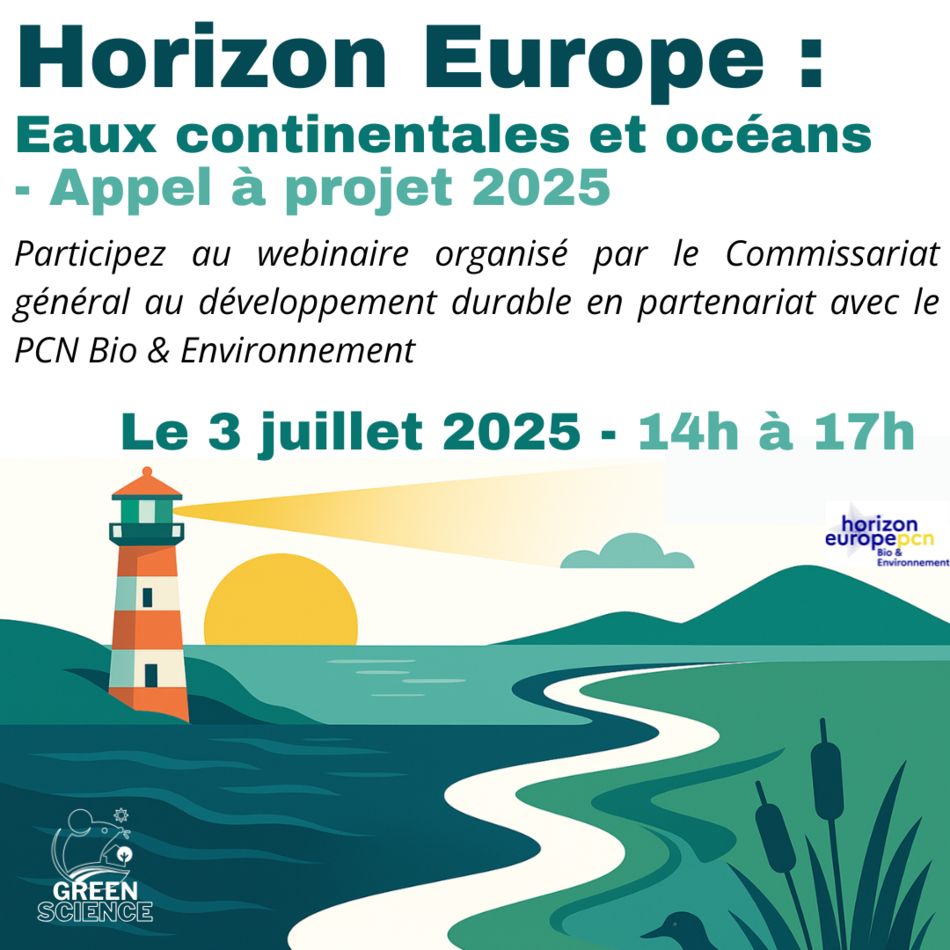ExpectedOutcome:
Project results are expected to contribute to all of the following expected outcomes:
- A suite of models, including at least a high-resolution global ocean circulation model and coastal models at the land-sea interface ready for configuration and simulation;
- Interoperable standards and APIs so that the twin models can be interfaced with Copernicus models (coupling, forcing, boundary conditions, …) or external models (hybrid twins) and run in conjunction;
- Enhanced on-demand ocean forecasting and ocean climate prediction capacities;
- Scientific toolboxes to be used in a (co-)working virtual environment;
- Improved capability to support EU legislation on the marine environment;
- Capacity to support the three priorities of the Mission (biodiversity, zero pollution, zero carbon) and supporting the lighthouses;
- A sustainable and integrated set of models and services that contribute to and benefit from developments in the Digital Europe Programme, contributing to Destination Earth;
- Significant contribution to the UN Decade of Ocean Science for Sustainable Development.
The outputs of the project should rely on the state of art of science in ocean modelling and digital tools, existing assets at EU level (e.g. from EuroGOOS, Copernicus, EMODnet, Regional Sea Conventions, etc.) and EU and international data management standards.
Scope:
The objective is to prepare the next generation of EU digital ocean models (Twin Ocean) complementary to the Copernicus marine service. They should be integrated into the architecture of the European Digital Twin Ocean, a public infrastructure (linked action with topic “EU Public Infrastructure for the European Digital Twin”: EU Public Infrastructure for the European Digital Twin Ocean, included under Other actions) to ensure access to required input and validation data (e.g. from EMODnet, EuroGOOS etc.), high performance and distributed cloud computing facilities. It will support the development of the Mission lighthouses and will be aligned with developments of Destination Earth under the Digital Europe programme. Projects may benefit from the experience and knowledge of the Joint Research Centre in the areas of marine ecosystem modelling at European scale that is supporting impact assessments by dedicated scenario simulations linked with policy frameworks.
The project should address all activities and tasks as described below, in cooperation and complementarity with the linked action[1] and other relevant actions:
1. Ocean twin: The project should develop the reference models suite for the European Digital Twin Ocean and should include:
- the preparation and development of model and data assimilation schemes, enabling simulation and development of what-if scenarios based on, but not be limited to, a global high-resolution kilometric ocean physics model from the IMMERSE project[2], that complement the Copernicus forecasting capacities and support on-demand simulation services;
- a suite of configurable coastal models to reach the local scale, as part of the twin ocean suite or the toolkit (see below) in line with state-of-art science proposed in the UN Decade of Ocean Science.
The project should ensure that these models can be used coupled with biogeochemistry, marine ecosystem models (including higher trophic layers) and other integrated models of the marine environment/human activities, etc., used already by policymakers and their scientific advisors. It should be based on state-of-art science, bringing significant innovation to existing EU programmes modelling capacities in support to policy making and implementation (MSFD, Habitats Directive, Common Fisheries Policy, etc.).
2. Developer’s toolkit: the ocean twin should be complemented with a toolkit to favour its exploitation including by additional models or software following specified quality standards. It should include:
- a scientific software library with open and free, easy-to-use software, models, AI algorithms (e.g.: addressing coastal circulation, particle tracking, aquaculture cultivation and emissions, ecosystems, hydrodynamics, etc.) that can be enriched progressively;
- a virtual development environment, dedicated to scientific validation where groups of users can assess their results, develop validation and product quality campaigns for their models and explore what-if scenarios;
- tools to retrieve data and products in suitable form for producing indicators for EU reporting (e.g.: Application Programming Interfaces for MSFD[3], Habitats, Birds directives reporting).
3. Use: The Ocean twin models suite should enable the development of what-if scenarios and simulations to support the Mission Ocean lighthouses. Therefore, it should be demonstrated and validated end-to-end with beta-testers on one what-if scenario in line with the Mission priorities and representative of the complexity of lighthouses.
For all of the above, the proposal should favour access to public-oriented models and algorithms free of licensing restrictions. The necessary service pre-operations, should be put in place including at least an online scientific helpdesk (cascading to Copernicus Marine Service and EMODnet if needed). The project should set up the required scientific governance and technical coordination to link closely with the project related to the twin architecture (topic “EU Public Infrastructure for the European Digital Twin”, linked action, included under Other actions), Copernicus and EMODnet for the implementation, with the other components of the Destination Earth initiative, with the EC/ES Joint Earth System initiative and with the Mission lighthouses to develop fit-for-purpose solutions in the frame of the Mission as well as with projects funded under the Green Deal call in 2020 topic LC-GD-9-3-2020 Towards a digital twin of the ocean. The Mission Implementation Support Platform will support and facilitate synergies between the lighthouses and the European Digital Twin ocean developments and ensure appropriate communication.
Proposals are expected to show how their activities and results will achieve the Mission’s objectives, in line with the timeframe of the Mission phases, i.e.: by 2025 for the ‘development and piloting’ phase and 2030 for the ‘deployment and upscaling phase’.
Specific Topic Conditions:
Activities are expected to achieve TRL 6 to 8 by the end of the project – see General Annex B.
Cross-cutting Priorities:
EOSC and FAIR dataOcean sustainability and blue economy
[1]linked action with topic “EU Public Infrastructure for the European Digital Twin Ocean”, included under Other actions of this Call
[2]https://immerse-ocean.eu/
[3]Marine Strategy Framework Directive





